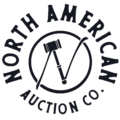For your consideration are five decorative sterling spoons from various makers and locations circa 1790-1952. The first spoon in this collection was made by Henry Clifford Davis Ltd in Birmingham circa 1952. In April 1901, Henry Clifford Davis registered the first of many marks with the Birmingham Assay Office. Around 1910, this silversmith company operated at 121 Vyse Street in Hockley, Birmingham. A few years later, around 1913, the company moved to Harford Works, Harford Street, Hockley. The business produced fuse components and aircraft parts during World War I to aid in the war effort. The spoon shows a heavy sterling construction with intricate and elegant designs throughout the neck and the bowl of the spoon. The neck of the spoon shows a section of twisted sterling at the top leading down to intricate designs and beads of sterling towards the bottom ending with a face of an animal. The inside of the bowl shows elegant floral like designs while the back of the bowl shows the respective stampings. The makers mark reads, "HCD" in conjoined circles with the next stampings showing the Birmingham town mark, a lion passant indicating the quality of silver, the letter "C" indicating the year it was made (1952) and a Queens head showing it was made under Queen Elizabeth II rule. The second and largest spoon in this collection was made in London circa 1892 by Charles Boyton & Son. The spoon shows a heavy sterling construction with a design or initial on the top of the handle. The spoon shows no designs. The back of the handle shows the makers mark and other respective stampings. The makers mark reads, "CB" in two conjoined circles while the following stamps show a lion passant indicating the quality of the silver, the London town mark, and the letter "R" indicating it was made in 1892. The third spoon in this lot shows no makers mark or stampings present. The egg spoon shows a wood constructed handle with a twist towards the top. The top of the handle is capped with sterling. The bowl of the spoon features an egg shape and small spout off of the side of the bowl for draining liquids. The fourth spoon in this collection was made by Peter & Ann Bateman in London circa 1790. Peter and John Bateman, the sons of Hester Bateman, registered their mark in 1790. This partnership only lasted a short time because Jonathan, who wed Ann Downlinff, passed away in 1791. The mark was changed to Peter and Ann Bateman in 1791. The trademark of Peter Bateman, Ann Bateman, and William (I) Bateman was registered in 1800. Jonathan and Ann Bateman's son, William, entered a partnership with his uncle Peter and his mother Ann in 1800. After Ann retired in 1805, Peter and William (I) Bateman's new mark was registered. The spoon shows a highly detailed, decorative sterling spoon with floral and fruit designs in the bowl of the spoon. The neck of the spoon shows intricate floral designs and the letter "B" at the top of the handle. The back of the neck shows the makers mark reading, "PB" over "AB". The other stampings show a lion passant indicating the quality of the silver, the London town mark, the letter "P" indicating it was made in the year 1790 and lastly, a kings head showing it was made under King George III rule. The fifth and final spoon in this collection was made by Stephen Adams & Son in London circa 1811. The spoon shows a highly detailed, decorative sterling spoon with floral and fruit designs in the bowl of the spoon. The neck of the spoon shows intricate floral designs. The back of the handle shows the makers mark reading, "SA", with the other stampings showing a lion passant indicating the quality of the silver, the London town mark, a letter "Q" indicating the year it was made (1811), and a kings head indicating it was made under King George III. The spoons in this collection show good condition overall with some slight wear from their age and use over the many years, but no signs of obvious damage are noted. The spoons measure from 12 1/8" L x 2 5/16" W to 8 13/16" L x 1 7/8" W. The collective weight of the spoons is 428.9 grams.

















